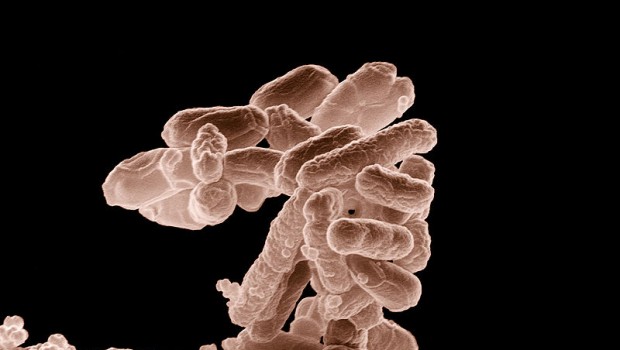微米氣泡對於環境改善與水處理之應用
微米氣泡對於環境改善與水處理之應用 (The Application of Microbubble in Environmental Remediation and Water Treatment)
國立臺灣大學環境工程學研究所 賴人暐
你是否曾在用吸管喝水的時候往水中吐泡泡?你可知道,如果這些看似不起眼的氣泡,變成微米等級的大小時,其物理性質會產生什麼樣的改變?究竟,微米氣泡有什麼神奇之處呢?
微米氣泡定義為粒徑小於 $$100\mu m$$ 的氣泡,其存在於水中與一般大小氣泡之行為有著很大的差異,如圖一所示,當一般大小氣泡存在於水中時,會立即浮起,最終爆破於水面上;相反的,當微米氣泡存在於水中時,會逐漸縮小,最後爆破於水面下,為何兩者特性會有如此大的差異呢?根據 Young-Laplace equation 可知,氣泡的半徑、壓力與表面張力的關係式為:
$$\displaystyle P_g=P_l+\frac{2\sigma}{r}$$
其中:$$P_g=$$ 氣泡內壓、$$P_l=$$ 液體壓力、$$\sigma=$$ 氣泡表面張力、$$r=$$ 氣泡半徑。當表面張力與液體壓力固定的情況下,半徑越小的氣泡會有越高的內壓,且根據 Henry’s law 可知,氣體的溶解度與該氣體於水中的分壓成正比,故具有高內壓之微米氣泡在水中會有更高的溶解度,因此,微米氣泡中的氣體分子會快速擴散至液體中,使得微米氣泡漸漸縮小,最終爆破於水面下,這特性便是氣泡能夠穩定存在於水體內長達數分鐘之久的原因。
此外,微米氣泡之表面具有電荷,以空氣微米氣泡為例,其表面存在之負電荷可使其避免與其他氣泡結合,得以微米氣泡大小存在於水中。再者,其縮小的過程會濃縮電荷,最終爆破時高濃度的電荷會釋放於水中,形成具有高氧化能力的自由基 (free radical),現今許多研究便是使用其特性應用於水處理中。
微米氣泡究竟是如何產生的呢?現今研究中,產生微米氣泡的方法有很多,大致上可分為兩種方法:攪動式 (agitation) 與超音波式 (sonication),原理皆為利用劇烈的壓力變化,例如:將含有氣體的水導入較小截面積的管子,或以噴嘴的方式,改變流體的壓力,此時,會使流體產生孔蝕現象 (cavitation),重複運用此原理,便能將氣泡打碎,形成微米等級大小。圖二即為水體含有微米氣泡時的照片,由圖二可知,含有微米氣泡之水體會呈現乳白色般,靜置片刻後,才會漸漸從乳白色變成原先透明的樣子。
究竟,微米氣泡是如何改善環境呢?首先,其具有提高氣體溶解度之特性,若將其應用於天然水體,可提高水體溶氧量,幫助水中生物生長,再者,微米氣泡爆破後所產生之自由基也能將溶解性有機物進一步氧化成生物可分解性物質,幫助水體中的生物代謝吸收。
除此之外,微米氣泡亦能應用於淨水處理程序,其表面富含電荷,可凝聚水中小顆粒,提高混凝及浮除效能;以臭氧結合微米氣泡,可進一步提高臭氧之氧化及消毒能力。若加強微米氣泡表面電荷,可應用於降解難處理之有機物,例如:酚 (phenol)、甲草胺 (alachlor)、對硝基苯酚 (p-nitrophenol)、羅丹明 B (rhodamine B) 等…….,都有相當程度之研究證明其功效。
總而言之,微米氣泡是個新興的技術,其低能耗、低成本也是眾多學者極力想要推廣的原因之一,所以,別再小看這些看似平凡的泡泡了。
參考文獻
- Agarwal, A., Ng, W. J., & Liu, Y. (2011). Principle and applications of microbubble and nanobubble technology for water treatment. Chemosphere, 84(9), 1175-1180. doi:10.1016/j.chemosphere.2011.05.054
- Khuntia, S., Majumder, S. K., & Ghosh, P. (2012). Microbubble-aided water and wastewater purification: a review. Reviews in Chemical Engineering, 28(4-6). doi:10.1515/revce-2012-0007
- Li, H., Hu, L., Song, D., & Al-Tabbaa, A. (2014). Subsurface transport behavior of micro-nano bubbles and potential applications for groundwater remediation. Int J Environ Res Public Health, 11(1), 473-486. doi:10.3390/ijerph110100473
- Li, P., Takahashi, M., & Chiba, K. (2009a). Degradation of phenol by the collapse of microbubbles. Chemosphere, 75(10), 1371-1375. doi:10.1016/j.chemosphere.2009.03.031
- Li, P., Takahashi, M., & Chiba, K. (2009b). Enhanced free-radical generation by shrinking microbubbles using a copper catalyst. Chemosphere, 77(8), 1157-1160. doi:10.1016/j.chemosphere.2009.07.062
- Ljunggren, S., & Eriksson, J. C. (1997). The lifetime of a colloid-sized gas bubble in water and the cause of the hydrophobic attraction. Colloids and Surfaces A: Physicochemical and Engineering Aspects129-130, 151-155.
- Matsumoto, M., & Tanaka, K. (2008). Nano bubble—Size dependence of surface tension and inside pressure. Fluid Dynamics Research, 40(7-8), 546-553. doi:10.1016/j.fluiddyn.2007.12.006
- Takahashi, M., Chiba, K., & Li, P. (2007). Free-Radical Generation from Collapsing Microbubbles in the Absence of a Dynamic Stimulus. J. Phys. Chem. B, 111, 1343-1347.
- Tsai, J., Kumar, M., Chen, S., & Lin, J. (2007). Nano-bubble flotation technology with coagulation process for the cost-effective treatment of chemical mechanical polishing wastewater. Separation and Purification Technology, 58(1), 61-67. doi:10.1016/j.seppur.2007.07.022
- Ushikubo, F. Y., Furukawa, T., Nakagawa, R., Enari, M., Makino, Y., Kawagoe, Y., . . . Oshita, S. (2010). Evidence of the existence and the stability of nano-bubbles in water. Colloids and Surfaces A: Physicochemical and Engineering Aspects, 361(1-3), 31-37. doi:10.1016/j.colsurfa.2010.03.005




 前一篇文章
前一篇文章 下一篇文章
下一篇文章 【極端氣候系列報導】導言
【極端氣候系列報導】導言 ![[活動] 逢甲大學2015諧能教具全國創意競賽](https://highscope.ch.ntu.edu.tw/wordpress/wp-content/uploads/2015/11/教具競賽網路圖.jpg) [活動] 逢甲大學2015諧能教具全國創意競賽
[活動] 逢甲大學2015諧能教具全國創意競賽  生態犯罪與多邊環境協議
生態犯罪與多邊環境協議  污水處理廠資源回收與電力自給自足
污水處理廠資源回收與電力自給自足  2011年德國大腸桿菌疫情 —(1)大腸桿菌與變異 (E. coli &O104:H4)
2011年德國大腸桿菌疫情 —(1)大腸桿菌與變異 (E. coli &O104:H4)  4月22日地球日專題 – 環境能源篇
4月22日地球日專題 – 環境能源篇 

請問用於現行的農產清洗農藥上,是否有幫助?